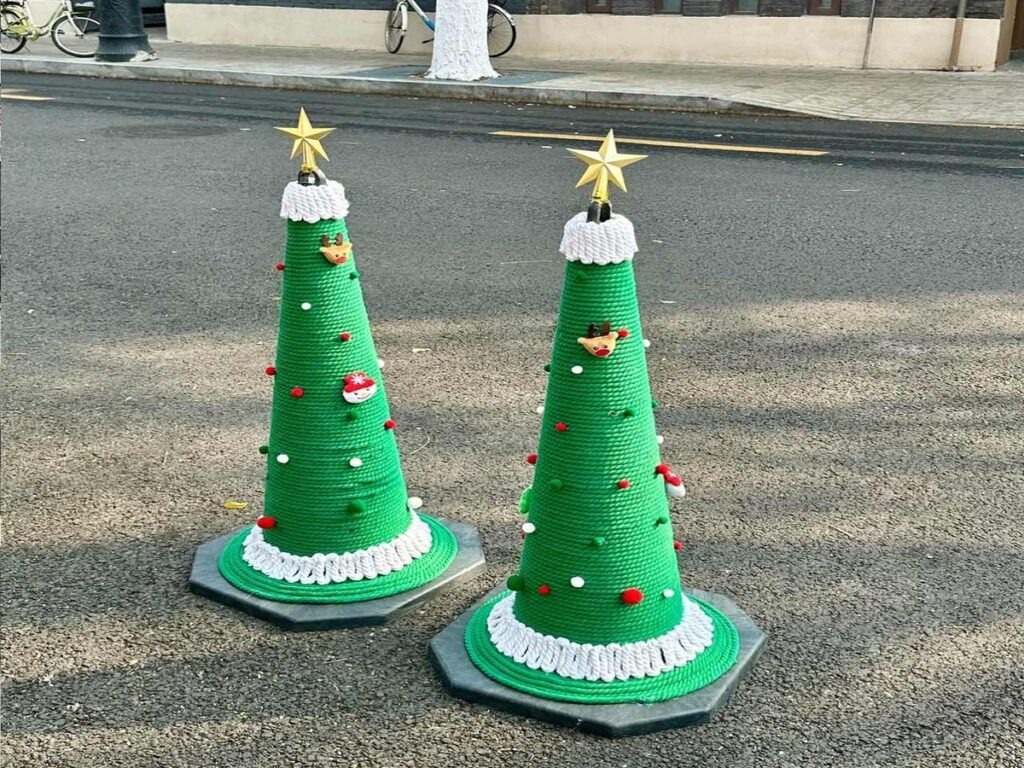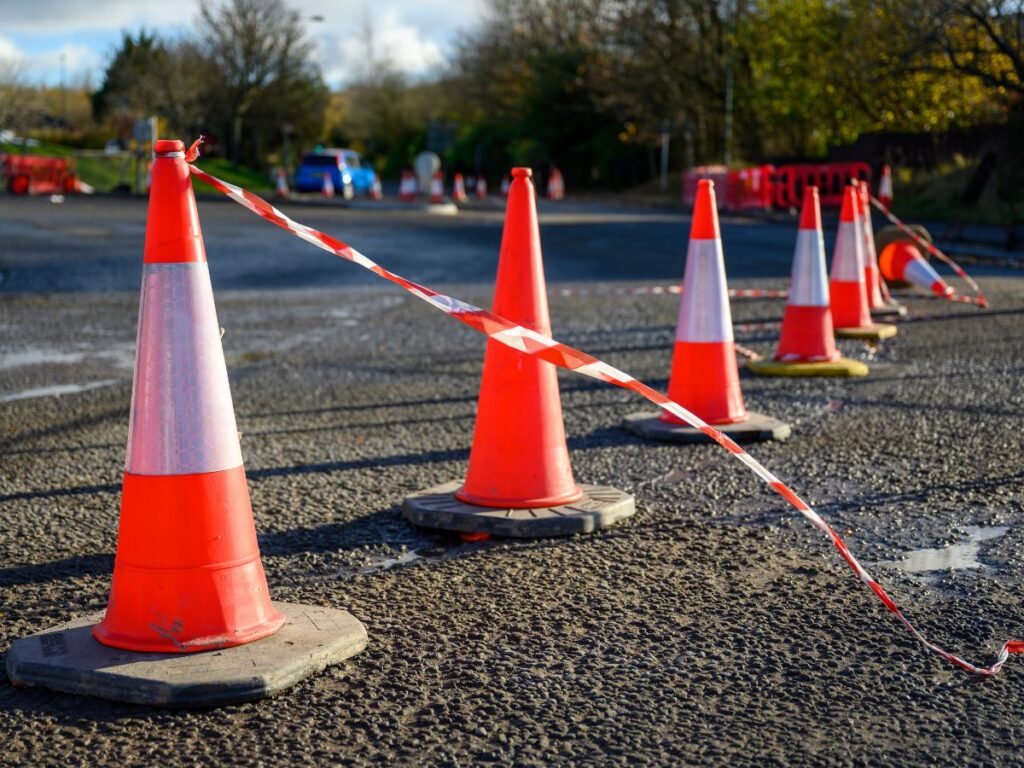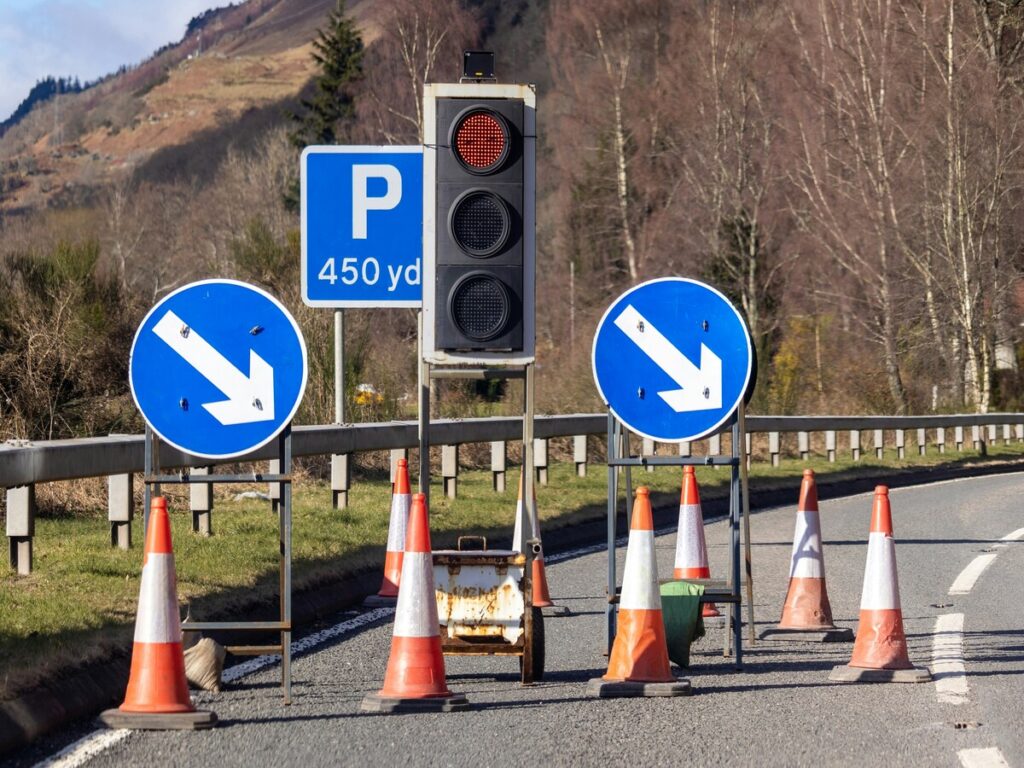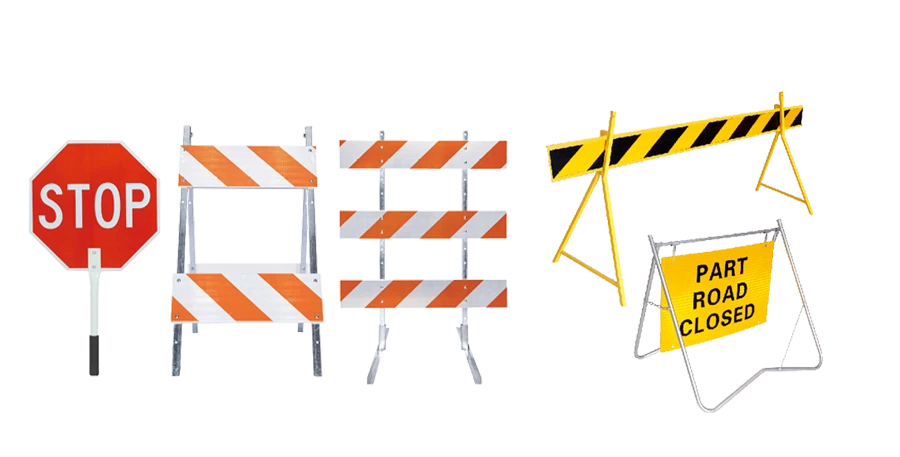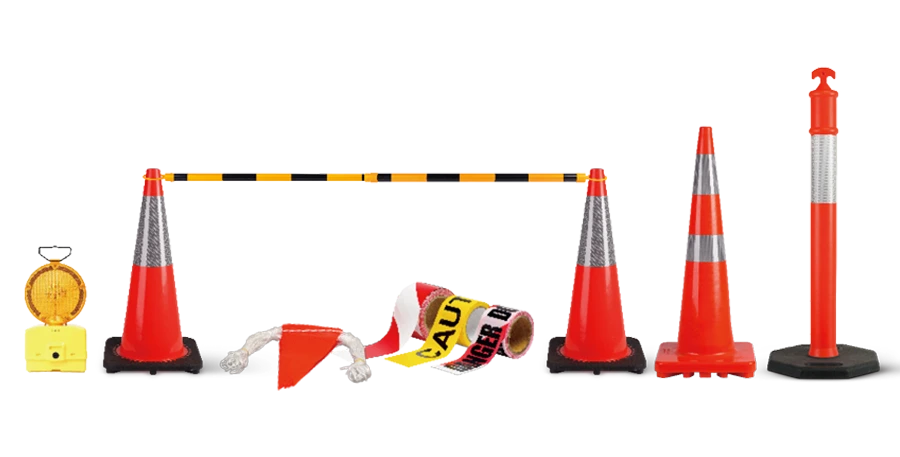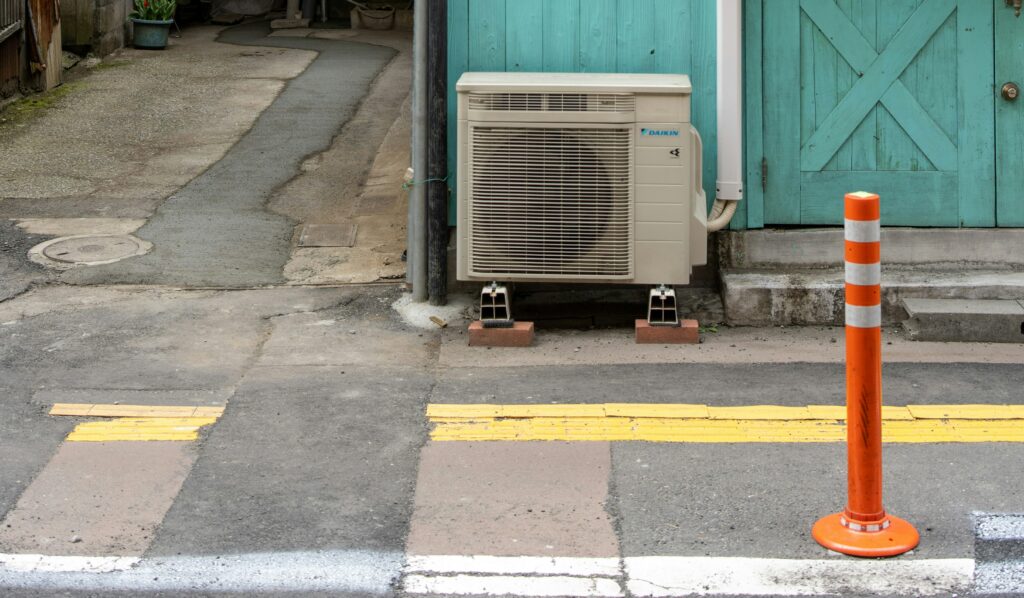
يلعب مراسمو المرور دورًا حيويًا في الحفاظ على الطرق آمنة ومنظمة. خصائصها العاكسة تعمل على تحسين الرؤية, خاصة في الليل أو على الطرق عالية السرعة. يمكن للسائقين توقع المنعطفات الحادة أو العقبات في وقت سابق, تقليل الحوادث. يضمن التباعد المناسب أن يوفر المراسمون إرشادات مستمرة على طول الطريق. هذا يساعد السائقين على تفسير ظروف الطريق والبقاء في المسار. يؤثر تطبيق تحديد الحمل الفعال أيضًا على سلوك السائق, جعل الطرق أكثر أمانًا للجميع. من خلال فهم العوامل التي تؤثر على التباعد, يمكنك تحسين مراسلة المسارات لتحقيق أقصى سلامة وكفاءة.
لحل موثوق, OPTsigns يوفر مراسلة مرور عالية الأداء, تم تصميمه بمواد متقدمة لتعزيز الرؤية والمتانة. Optsigns ' تم تصميمها لتحمل الظروف الجوية القاسية وحجم حركة المرور العالية, ضمان فعالية طويلة الأمد في كل من البيئات الحضرية والريفية
الوجبات الرئيسية
- التباعد الصحيح لعلامات المرور يجعل الطرق أكثر أمانًا. يساعد السائقين على الرؤية بشكل أفضل والبقاء على المسار الصحيح, حتى في المطر أو في الليل.
- من المهم للغاية قواعد تباعد العلامات. استخدم إرشادات إدارة الطرق السريعة الفيدرالية للبقاء آمنًا ومتابعة القانون.
- تحقق من الطريق وحركة المرور بعناية لتحديد تباعد العلامة. انظر إلى كيفية استخدام الطريق للعثور على أفضل إعداد.
- تغيير تباعد العلامة إذا كان الطقس سيئًا. في الضباب أو الثلج, إن وضع علامات أقرب معًا يساعد السائقين على الرؤية والبقاء آمنين.
- استمر في التحقق من وضع العلامة وتحديثه مع تغيير الطرق وتغيير حركة المرور. هذا يبقي كل شيء يعمل بشكل جيد وآمن للجميع.
لماذا التباعد الصحيح لمحطات الحارة يهم
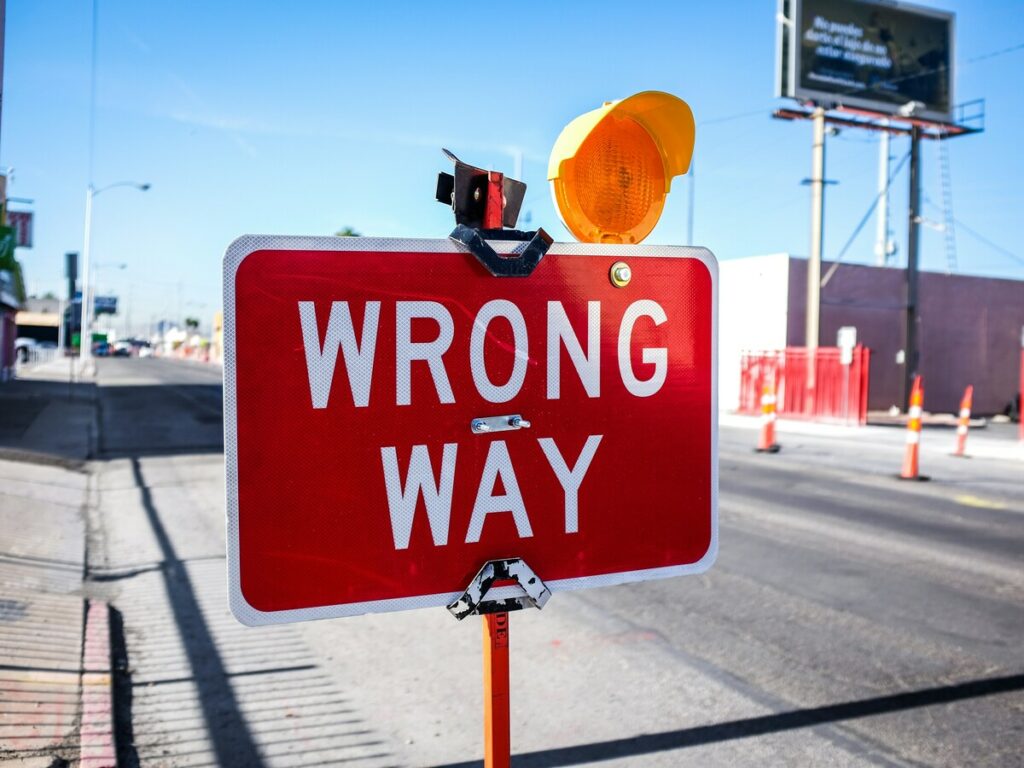
تعزيز السلامة على الطرق
يلعب التباعد المناسب للترسيح دورًا مهمًا في تحسين السلامة على الطرق. عند وضعها بشكل صحيح, يقوم المروحون بتعزيز الرؤية والدليل لحركة المرور القادمة, خاصة في الظروف الصعبة مثل المطر أو الظلام. تشير الدراسات إلى أن الأجهزة العاكسة وأضواء التحذير على المراسلين تزيد بشكل كبير من وعي السائق. هذا يقلل من احتمال الحوادث. على سبيل المثال, فترات التباعد تتراوح من 25 ل 200 لقد ثبت أن القدمين تحافظ على الرؤية وتوفر إرشادات مستمرة. على المنحنيات أو المنحدرات, يضمن التباعد الدقيق أن يتمكن السائقون من توقع التغييرات في الطريق المقبلة. من خلال تحسين تطبيق الرسم, يمكنك إنشاء بيئة قيادة أكثر أمانًا للجميع.
تحسين تدفق حركة المرور والتنظيم
تساعد المروحات ذات المسافات البارزة على تنظيم حركة المرور ومنع الارتباك. أنها توفر دليلًا واضحًا لحركة المرور القادمة, ضمان بقاء المركبات داخل ممراتها المحددة. هذا مهم بشكل خاص في المناطق عالية السرعة أو خلال ساعات المرور الذروة. على الطرق السريعة, تباعد الروح على فترات من 20 ل 30 يضمن العدادات تدفق حركة المرور السلس. في المناطق الحضرية, تباعد أقصر 10 ل 20 يستوعب العدادات سرعات أبطأ وتوقف متكرر. يقلل المرحلات الموضوعة بشكل صحيح أيضا الزجاجة وتحسين الكفاءة الإجمالية لحركة المرور. من خلال الحفاظ على تباعد ثابت, أنت تساعد السائقين على التنقل في الطريق بثقة.
ضمان الامتثال للمعايير التنظيمية
الالتزام بالمعايير التنظيمية للتباعد المحدد أمر ضروري. في الولايات المتحدة, تحدد الإرشادات الحد الأدنى والحد الأقصى للتباعد بناءً على ظروف الطريق. على سبيل المثال, ال الإدارة الفيدرالية للطرق السريعة يوصي الحد الأدنى من التباعد 20 قدم وحد أقصى 300 قدم على المنحنيات. صيغة شائعة, S = 3ائن -50, يحسب التباعد للمنحنيات, ضمان السلامة والامتثال. يجب وضع أول تحديد على منحنى في 2s, تليها الثانية في 3S, والثالث في 6s. باتباع هذه المعايير, يمكنك التأكد.
العوامل التي تؤثر على تحديد الموضع والتباعد
نوع الطريق والظروف
الطرق السريعة مقابل. الطرق الحضرية
يؤثر نوع الطريق بشكل كبير على كيفية وضع المراسلين. غالبًا ما تتطلب الطرق السريعة مراسلة ما بعد تحديد حواف المسار وتوجيه السائقين من خلال تغييرات المحاذاة. هذه مفيدة بشكل خاص في فترات طويلة أو المناطق ذات المنحنيات. في الإعدادات الحضرية, تعمل مراسلة Mount بشكل جيد بسبب براعة. يمكنك استخدامها عند التقاطعات أو المنعطفات الحادة حيث تكون الرؤية حاسمة. المروحات المرنة مثالية للمناطق ذات العبور العالية, أثناء صمامهم الاتصال بالسيارة وتقليل احتياجات الاستبدال. تحددات الجدار الحاجز تعزز الرؤية على الحواجز الخرسانية, جعلها مناسبة لمناطق البناء أو المقسمات المتوسطة. عن طريق اختيار النوع الصحيح, يمكنك التأكد من تلبية المراسلين الاحتياجات المحددة للطريق.
منحنيات, المنحدرات, وتحديات الرؤية
المنحنيات والمنحدرات يمثل تحديات فريدة من نوعها لوضع المرتبة. على منحنيات حادة, يضمن التباعد الأقرب أن يتمكن السائقون من توقع التغييرات في الطريق. قد تتطلب المنحدرات مراسلة إضافية للحفاظ على الرؤية, خاصة خلال الطقس المعاكس. يجب عليك أيضًا النظر في تحديات الرؤية مثل البقع العمياء أو العوائق. إن ضبط التباعد في هذه المناطق يساعد السائقين على البقاء في المسار ويقلل من خطر الحوادث.
سرعة حركة المرور وحجمها
الطرق عالية السرعة
الطرق عالية السرعة طلب تباعد محدد دقيق. في سرعات أعلى, drivers need more time to react to changes. Placing delineators closer together improves visibility and provides continuous guidance. على سبيل المثال, on roads with speeds exceeding 60 ميلا في الساعة, spacing intervals of 15-20 meters are often recommended. This ensures drivers can safely navigate the roadway.
Low-Speed or Congested Areas
In low-speed or congested areas, you can space delineators farther apart. Urban roads with frequent stops or slower traffic benefit from spacing intervals of 10-20 متر. This setup accommodates the reduced speed while maintaining clear lane guidance. Proper spacing in these areas prevents confusion and keeps traffic organized.
Environmental and Weather Considerations
الرؤية الليلية
Nighttime driving requires careful attention to delineator placement. Reflective materials on delineators enhance visibility in low-light conditions. You should space them closer together in areas with limited lighting to ensure drivers can see the roadway clearly. This approach minimizes the risk of accidents during nighttime travel.
Adapting to Snow, مطر, or Fog
الظروف الجوية like snow, مطر, or fog can reduce visibility and make driving hazardous. In these situations, you should adjust delineator spacing to improve guidance. على سبيل المثال, tighter spacing in foggy areas helps drivers stay within their lanes. On snowy roads, delineators with higher reflectivity ensure they remain visible despite the challenging conditions.
Regulatory Guidelines and Standards
Federal and State Regulations
Federal and state regulations provide clear guidelines for placing delineators. These rules ensure consistency and safety across different road types. You should always refer to these standards when planning delineator spacing. على سبيل المثال, ال الإدارة الفيدرالية للطرق السريعة (الهيئة الفيدرالية للطرق السريعة (FHWA).) recommends specific spacing intervals based on the type of road section. The table below outlines some commonly referenced guidelines:
| أنظمة | إرشادات التباعد |
|---|---|
| Mainline Tangent Sections | 200 أقدام |
| Ramp Tangent Sections | 100 أقدام |
| Other Options | Closer regular spacing may be used |
On mainline tangent sections, spacing plastic traffic delineators 200 feet apart provides adequate visibility for drivers. For ramp tangent sections, a closer spacing of 100 feet ensures better guidance during lane changes. In areas with unique challenges, you can use even tighter spacing to enhance safety. By following these regulations, you help maintain a consistent and predictable driving experience.
أفضل الممارسات في الصناعة
In addition to federal and state rules, industry best practices offer valuable insights for delineator placement. These practices often address real-world challenges that regulations may not fully cover. على سبيل المثال, you should consider the specific needs of the roadway, مثل المنحنيات, المنحدرات, أو التقاطعات. على منحنيات حادة, closer spacing improves visibility and helps drivers navigate safely. في مناطق البناء, tighter spacing reduces confusion and highlights potential hazards.
Traffic engineers often recommend conducting site surveys to identify unique conditions. This allows you to adjust spacing based on factors like traffic speed, مقدار, والظروف البيئية. Using reflective materials on delineators enhances visibility, خاصة في الليل أو أثناء الطقس السلبي. By combining regulatory standards with industry best practices, you can create a safer and more efficient road system.
Steps to Determine the Right Spacing for Delineator Placement
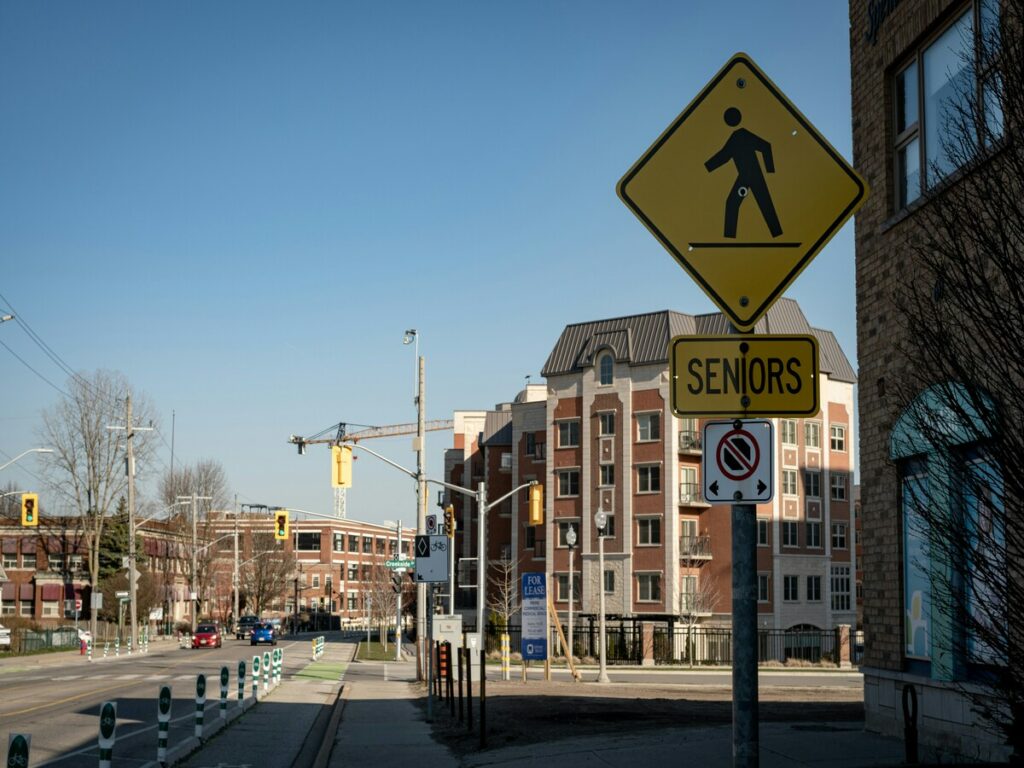
Assess Road and Traffic Conditions
Conducting a Site Survey
Before placing plastic traffic delineators, you should conduct a thorough site survey. This step helps you understand the road layout, أنماط حركة المرور, والتحديات المحتملة. Focus on key driving tasks such as locating bends, determining curve speed, and assessing roadway conditions. The table below outlines the essential segments and tasks involved in this process:
| Segment | Key Driving Tasks |
|---|---|
| 1. يقترب | Locate Bend, Determine Curve Speed, Maintain Cruise Speed, Maintain Lane Position, Assess Roadway Conditions |
| 2. Curve Discovery | Determine Curvature, Assess Roadway Conditions, Make Speed Adjustments, Adjust Path for Curve Entry |
| 3. Entry and Negotiation | Adjust Speed Based on Curvature/Lateral Acceleration, Adjust Trajectory, Maintain Safe Lane Position, Assess Roadway Conditions |
| 4. مخرج | Attain Intended Cruise Speed, Maintain Lane Position, Assess Roadway Conditions |
This survey ensures that delineators are placed at a constant distance from the edge of the roadway, improving visibility and safety.
Identifying Potential Hazards
Identify hazards such as sharp curves, steep slopes, أو التقاطعات. These areas often require closer spacing of delineators to guide drivers effectively. على سبيل المثال, on curves, tighter spacing ensures drivers can anticipate changes in the road. من خلال معالجة هذه المخاطر, you enhance the effectiveness of delineator application.
Consult Relevant Guidelines
الإدارة الفيدرالية للطرق السريعة (الهيئة الفيدرالية للطرق السريعة (FHWA).) المبادئ التوجيهية
ال الهيئة الفيدرالية للطرق السريعة (FHWA). provides clear guidelines for delineator placement. On ramp tangent sections, plastic traffic delineators should be spaced 100 أقدام. For mainline tangent sections, spacing should range from 200 ل 530 قدم. Adjust spacing on approaches to horizontal curves to ensure drivers can see multiple delineators at once. Following these guidelines ensures compliance and improves road safety.
اللوائح المحلية والدولة
Local and state regulations often complement federal guidelines. These rules may address unique regional challenges, such as weather conditions or specific road types. Always consult these regulations to ensure your delineator placement aligns with legal requirements.
Calculate Optimal Spacing
Using Spacing Formulas or Tools
Use spacing formulas to calculate the ideal distance between delineators. A common formula is S = 3√R - 50, أين “ر” represents the curve radius. This formula ensures that delineators are spaced appropriately for curves. The table below highlights key spacing recommendations:
| وصف | شهادة |
|---|---|
| Formula for spacing based on radius | S = 3√R – 50 |
| Minimum spacing requirement | Minimum spacing should be 20 قدم |
| Maximum spacing on curves | Spacing should not exceed 300 قدم |
These calculations help maintain a constant distance from the edge of the roadway, ensuring consistent guidance.
Adjusting for Unique Scenarios
Adjust spacing to account for unique scenarios like construction zones or adverse weather. على سبيل المثال, in foggy conditions, tighter spacing improves visibility. في مناطق البناء, closer placement highlights hazards and guides drivers safely. Tailoring spacing to specific conditions ensures effective delineator placement.
Test and Adjust Placement
Conducting Field Tests
Field tests allow you to evaluate the effectiveness of your delineator placement in real-world conditions. Start by observing how drivers interact with the plastic traffic delineators during different times of the day. Pay attention to visibility, خاصة في الليل أو في الأحوال الجوية السيئة. Check if the delineators provide clear guidance and if their spacing ensures smooth traffic flow.
Use tools like قياس العجلات or laser devices to confirm the distance between plastic traffic delineators matches your calculations. Walk along the roadway to inspect their alignment and ensure they remain consistent with the road’s curvature. If you notice gaps in visibility or areas where drivers might struggle to stay on course, adjust the spacing accordingly. Testing under various traffic speeds and volumes will help you identify any weaknesses in the placement.
Gathering Feedback and Making Adjustments
Feedback from drivers and road users is invaluable for refining delineator placement. Conduct surveys or interviews to understand their experience navigating the road. Ask if the plastic traffic delineators were easy to see and if they provided sufficient guidance. You can also collaborate with traffic engineers or local authorities to gather professional insights.
Analyze the feedback to identify patterns or recurring issues. على سبيل المثال, if drivers report difficulty seeing plastic traffic delineators on curves, consider reducing the distance between them in those areas. Make adjustments based on this input and conduct additional field tests to verify the improvements. Regularly reviewing and updating the placement ensures the delineators remain effective as road conditions change.
Common Mistakes in Lane Delineator Spacing
Overcrowding or Excessive Spacing
One common mistake in placing delineators is overcrowding or leaving excessive gaps between them. Overcrowding can overwhelm drivers, making it harder to focus on the road. When lane delineators are too close, they may create visual clutter, خاصة على الطرق المستقيمة. على الجانب الآخر, excessive spacing reduces their effectiveness. Drivers may lose sight of the next delineator, especially in poor visibility conditions like fog or rain. You should aim for balanced spacing that provides clear guidance without overwhelming the driver. على سبيل المثال, على الطرق السريعة, spacing delineators 20 ل 30 meters apart ensures visibility while maintaining order.
Ignoring Road-Specific Conditions
Another mistake is failing to consider the unique conditions of the road. Each road has specific needs based on its layout, أنماط حركة المرور, والبيئة. على سبيل المثال, sharp curves or steep slopes require closer placement of lane delineators to guide drivers effectively. Ignoring these factors can lead to accidents, as drivers may not have enough visual cues to navigate safely. You should always assess the road type and its challenges before deciding on spacing. For urban roads with frequent stops, shorter spacing works better. على الطرق السريعة, longer spacing is more suitable due to higher speeds.
Failing to Update Spacing Based on Changing Conditions
Road conditions and traffic patterns change over time. Failing to adjust delineator placement to reflect these changes is a critical mistake. على سبيل المثال, increased traffic volume or new construction zones may require tighter spacing to improve safety. بصورة مماثلة, weather changes like heavy snowfall or fog might demand adjustments to ensure visibility. Regularly reviewing and updating delineator placement helps you maintain their effectiveness. Conduct periodic site surveys and gather feedback from road users to identify areas where spacing needs improvement.
Real-World Examples of Effective Delineator Placement
تباعد على الطرق السريعة
Highways require precise delineator placement to ensure safety and smooth traffic flow. You should follow specific spacing recommendations based on the type of highway section. على سبيل المثال, ramp tangent sections benefit from a spacing of 100 feet between lane delineators. On mainline tangent sections, spacing can range from 200 ل 530 قدم, depending on visibility and road conditions. Horizontal curves demand adjustments to maintain visibility, ensuring drivers can see multiple lane delineators at once. The table below summarizes these recommendations:
| نوع القسم | توصية التباعد |
|---|---|
| Ramp Tangent Sections | 100 أقدام |
| Mainline Tangent | 200 ل 530 أقدام |
| Horizontal Curves | Adjusted for visibility |
من خلال الالتزام بهذه الإرشادات, you can optimize delineator application on highways, providing clear guidance for drivers at high speeds.
Spacing in Construction Zones
Construction zones often present unique challenges, such as lane closures and shifting traffic patterns. في هذه المناطق, closer spacing of delineators is essential to highlight hazards and guide drivers safely. You should place delineators 5 ل 10 متر, depending on the level of risk. على سبيل المثال, tighter spacing works well near active work zones or sharp detours. Reflective materials on delineators improve visibility, خاصة في الليل أو أثناء الطقس السلبي. Proper spacing in construction zones reduces confusion and ensures a safer environment for both drivers and workers.
نصيحة: Use flexible delineators in construction zones to minimize damage from accidental vehicle contact.
التباعد في المناطق الحضرية
Urban roads require shorter spacing between delineators to accommodate slower speeds and frequent stops. You should space delineators 10 ل 20 meters apart to provide clear lane guidance. This spacing works well at intersections, المنعطفات الحادة, and areas with heavy pedestrian activity. في الإعدادات الحضرية, mount delineators are particularly effective due to their versatility. They can be installed on curbs or barriers to enhance visibility. Proper delineator placement in urban areas helps organize traffic, reduces bottlenecks, ويحسن السلامة على الطرق بشكل عام.
ملحوظة: Regularly review urban delineator placement to address changes in traffic patterns or new developments.
Proper spacing of delineators ensures safer roads and smoother traffic flow. You must evaluate road type, سرعة حركة المرور, and environmental factors to determine the best placement. على سبيل المثال, highways and urban roads require different spacing strategies to meet safety needs. By following established guidelines and conducting site surveys, you can optimize lane delineators for any scenario. Regularly reviewing and adjusting placement ensures they remain effective as conditions change. With a systematic approach, you can enhance road safety and maintain compliance with regulations.
التعليمات
What is the ideal spacing for lane delineators on highways?
The ideal spacing on highways ranges from 20 ل 30 متر. This distance ensures clear visibility and smooth traffic flow. For curves or areas with reduced visibility, you should reduce the spacing to provide continuous guidance for drivers.
How do weather conditions affect lane delineators spacing?
Adverse weather like fog, مطر, or snow reduces visibility. في مثل هذه الظروف, you should place lane delineators closer together. This adjustment helps drivers stay on course and improves safety during challenging weather.
Are there specific guidelines for delineator placement in construction zones?
نعم, construction zones require tighter spacing, عادة 5 ل 10 متر. This setup highlights hazards and guides drivers safely through the area. Using reflective or flexible lane delineators enhances visibility and minimizes damage from accidental contact.
How can you ensure compliance with regulatory standards?
You should consult federal, ولاية, and local guidelines. على سبيل المثال, ال الإدارة الفيدرالية للطرق السريعة (الهيئة الفيدرالية للطرق السريعة (FHWA).) provides spacing recommendations for different road types. Following these ensures your delineator placement meets legal requirements and enhances road safety.
Can lane delineators spacing be adjusted after installation?
نعم, you can adjust spacing based on feedback or changing conditions. Conduct field tests and gather input from drivers to identify areas needing improvement. Regular reviews ensure the lane delineators remain effective and adapt to evolving road and traffic conditions.
نصيحة: Always prioritize visibility and safety when adjusting delineator spacing.


